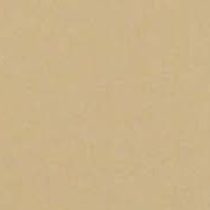Landscape Architecture for Landscape Architects › Forums › GENERAL DISCUSSION › A Goldmine of Great Portfolio and Firm Interview Commentary and Advice
- This topic has 1 reply, 5 voices, and was last updated 13 years, 4 months ago by
 landplanner.
landplanner.
-
AuthorPosts
-
August 5, 2012 at 8:54 am #156758
 landplannerParticipant
landplannerParticipantThe forum (or discussion threads if you prefer) found on the Archinect site are remarkable for their range of topics, depth and frank commentary, far more forthcoming and opinionated than any of us here IMHO.
In my own search for a couple of topics I came across these two gems.
The first one is entitled:
The Architecture Job Application Hints & Suggestions from Employers
This thread is noteworthy in several ways:
- It is a collection of survey responses from a variety of architecture firms in what they look for in hiring prospective job candidates. Their singular and collective commentary, while somewhat “common sense” stuff still offers some very insightful and hopefully helpful nuggets of guidance in how to prepare and present ones portfolio and yourself in an interview setting.
- This discussion forum is going on 5 years old now (circa 2007) about a year before the main beams supporting the rickety floor of our national economy finally burnt completely through and everything came crashing down. Five years later, the comments and advice offered are as timely now as they were then, and back then firms were still hiring, not on a binge, but they were hiring in numbers.
- Lastly, this just might contribute to reducing the redundant and seemingly repetitive postings here that fly under the flag of “What should I do with my Portfolio ?” …You know the ones that appear two to three times a month here at Land8Lounge.
Secondly, I found this golden and gifted advice under another Archinect thread whose title isn’t worth mentioning but this strikingly frank and forward opinion is from a presumably senior to principal level architect and what matters most to them when they are looking to hire into their firm. This is exceedingly good, sound and wise advice that I could find nothing to differ with.
When I look at resumes, I generally look for the following things:
*** Professionalism & Communication Skills The resume is clean and clear, with no misspellings, grammatical errors, gimmicks, or goofy “designerly” crap. The focus of the resume is on communicating your capabilities rather than your credentials. You communicate in a way that is personable, engaging, and understandable.
*** Clear Benefit Your resume should tell me two things about you: What can you do for me, and how can you make me money?
*** Clear Differentiation. What makes you special? It shows that you are serious, interesting, and capable of doing interesting things. It should make me want to meet you and talk to you.
Third, if I decide your resume and cover letter (and teaser page, if you included one) is interesting enough that I want to interview you, you need to show me the following things when we meet:
*** People Skills You present yourself in a very professional and personally engaging manner. You dress appropriately, carry yourself with confidence but not arrogance, speak clearly and to the point, and are just generally “good in a room.” This is very important. Architecture is a social profession. You don’t need to be a raging extrovert, but you need to be comfortable and engaging and able to interact with strangers easily. Not only that, but everyone who meets you will subconsciously make up their minds about you within about the first 10 seconds your interact. Make a good first impression and don’t be weird.
*** Passion & Energy What do you really care about? What gets you out of bed in the morning? Why architecture and not something else? Bring that to the interview and let me see it or hear it. I can get faceless cogs for the corporate machine and interchangeable CAD slaves anywhere. I want people with passion, energy, dedication.
*** Ambition, Discipline, and Direction Is your passion, energy, and dedication directed and connected to tangible goals? Toward what? What are your goals? How specifically do you intend to achieve them? What have you already done toward that end? Do you have a plan? Do you have vision? Share them. The opposite of the faceless cog is the directionless, solipsistic, adult-child wanderer who can’t seem to make decisions about anything or focus on getting things done. There are thousands of those pouring out of design schools every year. Show me you aren’t one of them.
*** A Good Eye and Good Judgment Bring me stuff that clearly demonstrates you have a productive and creative design process, the ability to think three-dimensionally and holistically, and are capable of integrating complex determinants into elegant and interesting solutions. I would much rather see how you think about design than look at a bunch of shiny photo-realistic renderings. I once hired a new graduate as a designer on the basis of his sketchbook alone (no portfolio at all), simply because it was so clear that he had a strong design sense, demonstrably good judgment, and clear process for thinking about design.
*** A Good Hand Show me what you can do with a pen or pencil on paper. You can impress me with your computer skills later if you like, but before that I want to know whether or not you can use hand-drawing as an effective design and communication tool. Drawing and design thinking are inextricably intertwined. I have also learned from hard experience that those who cannot draw with a pen or pencil, can’t draw with a computer either. Your sketches don’t have to be perfect, but they should be interesting, engaging, and clearly communicate your design ideas.
You can’t get any better than this.
August 5, 2012 at 11:11 pm #156766 landplannerParticipant
landplannerParticipantThank you Henry, I think this could be very helpful to many here. But takes some real effort, like having to read it first.
August 6, 2012 at 3:44 pm #156765 idaParticipant
idaParticipant“…don’t be weird”
damn…
August 6, 2012 at 7:49 pm #156764 Andrew Garulay, RLAParticipant
Andrew Garulay, RLAParticipantIt is under “People Skills” in Landplanner’s post. I liked that one, too.
August 7, 2012 at 3:31 pm #156763 William LampkinParticipant
William LampkinParticipantGreat Post! Thanks for the information. I like to check the job postings on Archinect just to keep tabs on the industry but I will now go and look further into the site.
Thanks!
August 7, 2012 at 7:04 pm #156762 Jason T. RadiceParticipant
Jason T. RadiceParticipantI don’t know if this is ‘resume’ is lumped into the entire application package (resume/cover letter/work samples), but the general consensus from career HR professionals (I know a number of them personally) is just the opposite of this. The particular person who wrote what they look in this posting for is certainly an anomaly.
The above mentioned descriptive “wordy” resume is almost always a no-no. The information he is describing should be found in the cover or introduction letter, not the resume itself. The cover letter should BREIFLY restate your qualifications and should explain what makes you special and how you would fit into the firm you are applying to. And yes, you should rewrite your cover letter for very submission, even slightly (it should not be a form letter). The cover letter should be no more than a page, but you can use smaller type or margins if needed. Just keep it concise, and it should be well organized like the resume.
The purpose of the resume or CV should not be conversational, but rather a brief history of what makes you a fit for that firm based on education and experience. You should put a brief description of what you did or what you have learned, but it should not be more than a sentence. More than that and the HR person, who has to go through hundreds of these things nowadays, will file it in the circular cabinet. This is the same reason you do not direct them to view your website or external link for work samples…it generally won’t happen. Your entire package should take no more than a minute and a half to two minutes for a person to sort through in the first round of sorting. I know when I did hiring; the resume was the least important factor. Work samples were #1, followed by the cover letter and then the resume. The resume is a check list for HR to see if you meet the basic qualifications of the position. That is why the names and dates are so important to have clearly distinguished. I’ve had interviews where the firm principals haven’t even read the resume until I put hard copies in front of them (yes, always bring hard copies of your package, especially work samples that you can leave with them). They had only read the cover letter and work samples after HR or the head-hunter sent the recommendation over. Well organized into headings and easy to read are paramount. No pictures, no fancy fonts, and lots of white spaces. This can be more than one page, with your education and work experience always on the first page. Other less pertinent information can be put on the second page. You may use a letterhead across for your entire package to set yourself apart, if you can conjure a good one.
August 7, 2012 at 10:40 pm #156761 landplannerParticipant
landplannerParticipantJason:
Thank you for your excellent “on the ground” and more recent account of what HR people are really looking for and what matters in the first screening. We both know it is exceptionally rough out there, and getting through the first few minutes of initial screening, will determine if one even makes it into the “A” pile and will hear, in an affirmative way, back from the design firm they applied to. I think many here will appreciate your counterpoints and insight.
August 8, 2012 at 7:54 am #156760 Jason T. RadiceParticipant
Jason T. RadiceParticipantThanks. This system is pretty standardized and traditionalized through all manner of industries, but of course, the creative arts (of which LA is one) expect a bit more. My suggestions are not to say you cannot be creative with what you produce for an application, but it should contain a STRONG structure and logic to its organization, and don’t take it too far. Gimmicks can be off-putting. My resume package is the evolution of over a decade of constant refinement using marketing strategies, professional HR feedback and direct feedback from interviewers. If you do have an interview, do not be afraid to ask what drew them to contact you.
Keep in mind that the entire package is a direct reflection on your capabilities. As stated in the initial post, the cover letter speaks to your writing skills, so spend a lot of time refining it. The quality, clarity and structure of the resume speaks to your organizational skills. Everything about your first impression should scream quality and professionalism, from the ease of reading on the PC to the whiteness and weight of the paper for hard copy submissions. My suggestions are tailored more for the private sector design oriented firm (which is my target audience) and have had some pretty decent responses over many years I’ve been using them. Although nobody has bit the hook recently after the interview, it did get my feet in some pretty impressive doors I never thought I’d walk through, particularly in this crummy job market.
Beware, there is more than one type of appropriate resume. There are resumes specifically for government or educational employment, which have completely different standards on how they have to be written. The government resumes usually rely on (and what the computer screening looks for) action words like “supervised” or “budgeted”. And many government applications used to be TIMED for completion. They need to be VERY detailed with obscure information such as exact start/finish dates of jobs and graduations. That stuff can take some time to collect, especially if you are old like me. There are lots of web resources to help guide you for what kind of position you are looking for with those jobs, and applications can take an hour or more to complete. Education jobs usually require a pure Curriculum Vitae type of resume, which are much more verbose and detailed, and much longer as a result, often several pages.
Anyways, always glad to help. And that is what is great about this site…we are all in it together, and there are lots of people here willing to help with all types of experiences and specialties. Using this site for portfolio reviews is fantastic. It is always interesting to flip through other people’s work to see the creativity and different ideas that are out there. I wish there was something out there like this when I was just starting out.
August 8, 2012 at 11:35 pm #156759 landplannerParticipant
landplannerParticipantJason:
Your comments made me re-read that “resume” advice I posted to begin with. At second and third look, particularly based on what you have added here, that advice would be best taken and applied to the cover letter. If you could cover that kind of ground in a cover letter (no way it could be one page) and do it masterfully, you would certainly stand out and advance to the “A” pile.
-
AuthorPosts
- You must be logged in to reply to this topic.


